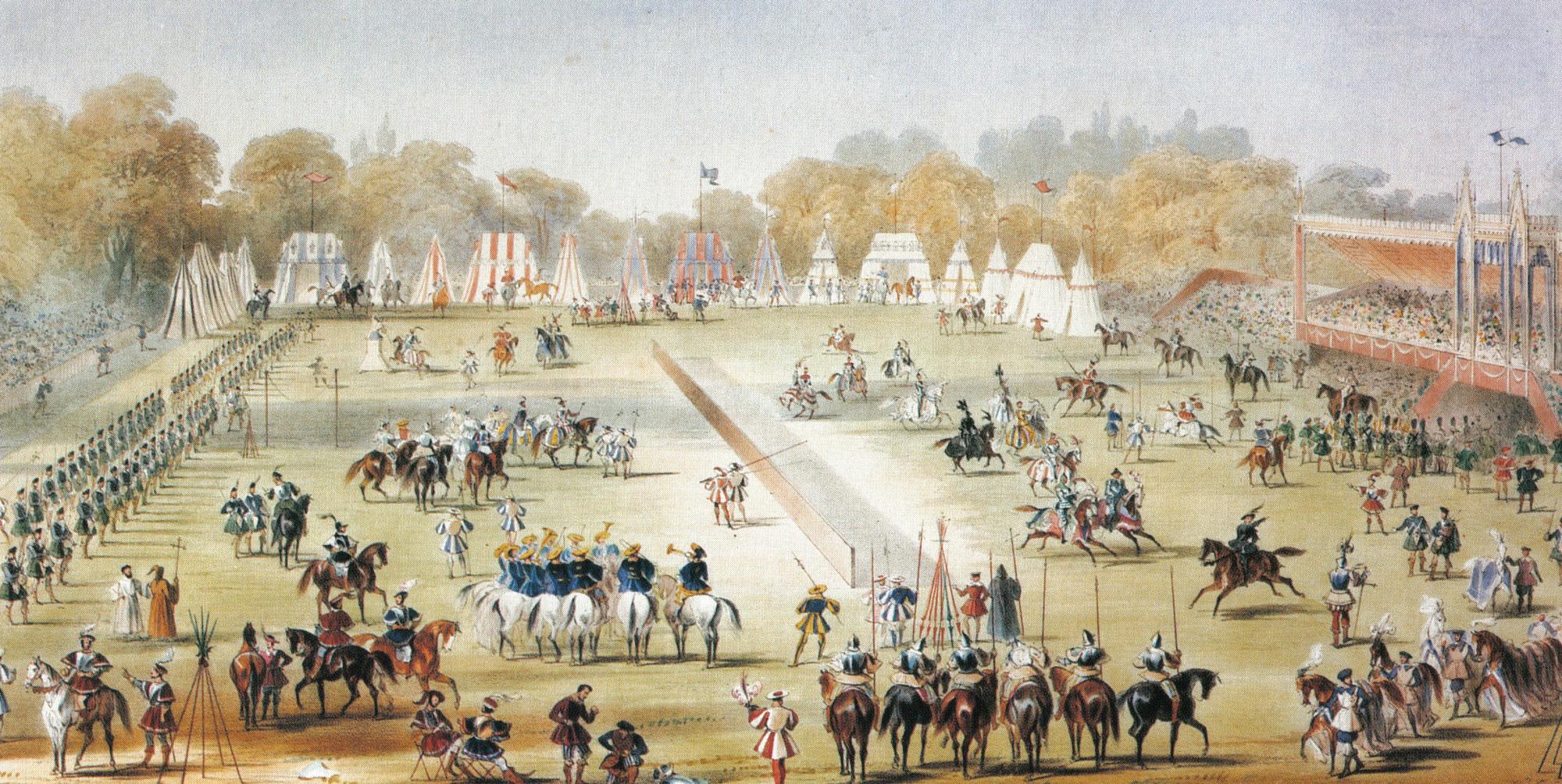Created by Shikha Pandey on Wed, 10/07/2020 - 23:36
Description:
The tournament was organized to resemble a traditional, medieval tournament as closely as possible, from the invitations to the clothing to the royalty. In this image, we can see the entire arena and the stands from an angle during the jousting event. On the far right are the stands, where the onlookers sit. In the middle of the stands, between the two higher structures, would normally sit whoever was presiding over the tournament. In medieval times, this would have been someone of the royal family. While he had been Lord of the tournament, Earl Archibald William Montgemorie of Eglinton decided he was going to have fun and participate, thus showing his own "knightly" image. Presiding over the event in his stead sat Georgiana, the Duchess of Somerset, who was titled the Queen of Beauty for the duration of the tournament. Along with her would sit some of her ladies-in-waiting and possibly a couple of guards. At the beginning of the tournament, each participant would go up to the observation box where the Queen sat and present themselves to her.
In the far back of the arena, we can see the tents, where the knights would have relaxed and prepared between matches. We can also guess that this particular event is the jousting event considering the long railing in the middle, and the number of men holding jousting lances. We can also confirm that it is a jousting event from the word "List" in the title, which generally refers to the arena where a jousting event takes place, though there could still be other events, like a melee. If we look very carefully, we can notice some of the knights, some wearing gold armour, another wearing black, and so on. Many of the participants presented themselves as either "The ___ Knight" ("The Black Knight" for example), or as a "Knight of" something (for example, "Knight of the Black Lion" or "Knight of the White Rose" and even "Knight of the Dragon").
Copyright:
Associated Place(s)
Timeline of Events Associated with Eglinton Tournament: A View of the Lists
Part of Group:
Featured in Exhibit:
Artist:
- James Henry Nixon


